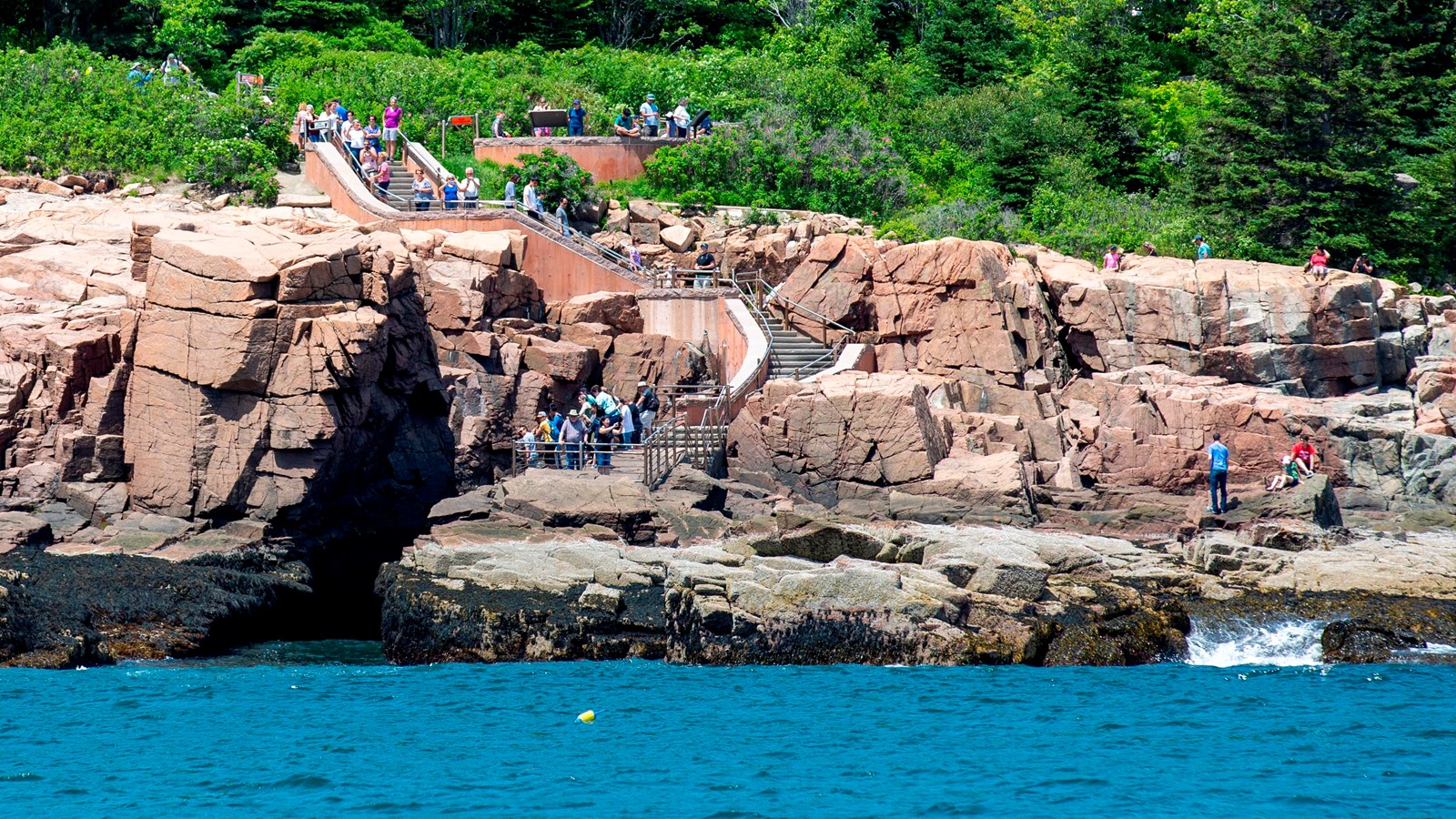Last updated: July 28, 2025
Place
Thunder Hole

Will Newton/Friends of Acadia
Bus/Shuttle Stop, Food/Drink - Snacks, Gifts/Souvenirs/Books, Historical/Interpretive Information/Exhibits, Parking - Auto, Restroom, Scenic View/Photo Spot
Witness the power of ocean tides at Thunder Hole. Thunder Hole, a popular destination year-round, is a carved out inlet along the rocky eastern shoreline of Mount Desert Island. When a storm or the turning tide forces waves into this narrow channel, the air escapes with a thunderous reverberation that is both deafening and thrilling. We recommend coming 1 – 2 hours before high tide for the best chance of hearing this roar. Wave sprays here have been seen to reach over 40 feet (12 m) in height. At low tide, follow the stairs down for a close look at the cliff walls carved by the crashing water.
Stay aware when visiting Thunder Hole. Even in calm weather, rogue waves can suddenly wash over the surrounding granite ledges and outcrops. In storms, sections of the walkway may be closed.
You can reach Thunder Hole by driving the Park Loop Road or walking along Ocean Path. A small parking lot here provides reserved wheelchair-accessible parking. In summer, catch the free Island Explorer shuttle to avoid congestion. Thunder Hole Gift Shop, housed in the what was formerly the park's first official Ranger Station, offers souvenirs and snacks.
A Little History of A Thunderous Hole
Ancient geological forces and the passage of time long ago formed Thunder Hole and the surrounding rocky coastline that characterizes Mount Desert Island today. Clara Barns Martin's 1867 'Guide Book for Mount Desert Island,' mentions 'Thunder Hole or Thunder Cave, a deep chasm into which with every returning wave the water rolls and swirls, and when wind and tide conspire, the wave is thrown against the overhanging rock with a blow that makes the whole cliff shake and the air tremble as with the crash of thunder. The wind should be south of east and the side just at the point to throw the wave under the rock. Failing this, there will be disappointment." In the early 1900s, the local Village Improvement Associations constructed hiking paths to the site. Later, roads followed, including the Park Loop Road in the 1930s..In 1934, the park's first ranger station was constructed on the west side of the Thunder Hold parking lot by the New Deal-era Works Progress Administration (WPA). The 26x16 foot, one-story building is set on a stone foundation and features a hipped roof and vertical board and batten siding. The interior included a ranger's room with a stone fireplace and another room that served as a store. Tow large stones flank the steps into the building that were a part of the original design. A copper strip is visible above the door frame and the chimney with terra cotta pots can be seen from the front the building. The building was one of the first at Acadia designed in the NPS Rustic Design style and was inspired by regional architectural forms. In the late 1960s the building was converted into a concessioner's gift shop. In the 1970s, the roof was reconstructed and new restrooms were constructed in 1982.
The park's 195 Master Plan identified the Thunder Hole as a major developed area in the park and every subsequent master plan followed. Additional facilities were added to the site including restrooms (later removed) in 1941. In the 1960s, walkway systems were constructed including wider paths, higher retaining walls, and the addition of more handrails.
The current lower walkway system was completely reconstructed again in 1992-1993 and an accessible ramp with switchback was constructed.
The Thunder Hole area is on the National Register of Historic Places for its rustic design and New Deal-era history.
